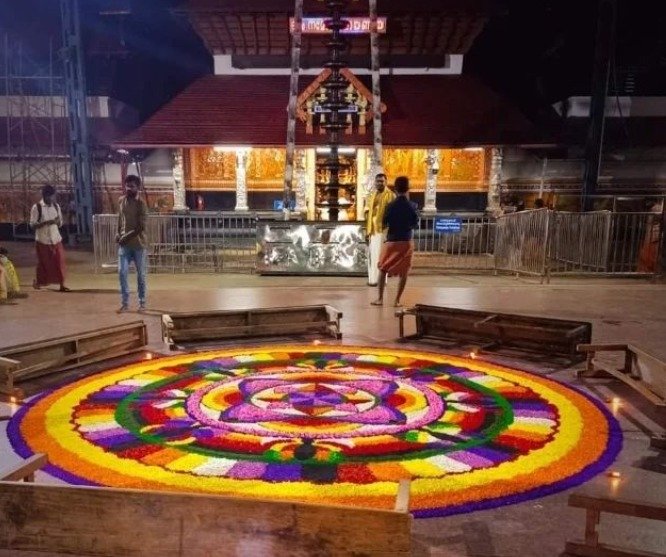Understanding the Protocols Before Visiting Guruvayoor Temple

All Hindus are aware of the Guruvayoor Temple. However, is everyone aware of the proper protocol to adhere to before seeing the deity? The terms Guru, Vayu, and Ooru are the roots of the word Guruvayoor. Vayu represents Lord Vayu, and Guru represents Lord Brihaspati. The word “place” is ooru in the local vernacular. It is said that after Dwaraka subsided into the sea following the great deluge, an idol floated above the water. At the command of Lord Shiva, Brihaspati and Vayu transported the idol and assembled it at the location that became known as Guruvayoor. Before departing for Dwaraka, it is reported that Lord Krishna gave Yashoda this supreme idol and instructed her to care for it in the same manner that she did for Lord Krishna.
Every Guruvayoorappan devotee ought to have at least one instance in their memory where they uttered the words ‘Ente Guruvayoorappa,’ which translates to “O My Lord of Guruvayoor.” Approximately one million devotees visit Guruvayoor annually, and about a hundred marriages take place there each day. However, very few people know the precise procedures for approaching this hallowed site.
Beginning with a washing or bath in the ‘Rudra Kulam,’ the sacred pond of the temple, one begins their tour to the shrine. After that, get a Tulsi garland, a lotus flower, and a kadali plantain plant. Kadali plantain is offered to the Lord Ganesha at the Ganapathy temple, near to the Melpathoor Auditorium. Take one Pradakshina chanting the mantra “ Gum kshipra prasadanaya namah:” According to legend, after this visit, Lord Ganesha will bestow upon us his blessings and assist us in receiving an unhindered darshan of Lord Guruvayoorappa.
Following your visit to the Ganapathy temple, proceed to the Deepasthamba, which is located in the West Nada of the temple. There, you will find a miniature version of the Lord Guruvayoorappan Idol. Chant “Om Namo Bhagavathe Vasudevaya,” present the idol with a lotus flower, and then proceed to the South Nada. There, you will find an Indian Bael tree. Chant “Om Parvathye Namah: Om Annapoorne Sada Poorne Shankara Prana Vallabhe Njana Vairagya Siddhyardham Bhiksham Dheheem Cha Parvathi.” Circumambulate the revered Indian Bael and offer prayers to Lord Shiva by reciting the Shiva Panchakshari Mantra.
From there, through East Nada, we will reach “Narayanalayam,” where we will find the idol of Lord Krishna, worshipped by one of Bhagavan’s greatest devotees, Poonthanam Namboothiri. Offer prayers to the idol by chanting “Krishnaya Vasudevaya Haraye Paramathmane Pranathakleshanashaya Govindhaya Namo Namah:” Narayanalayam is also the home of many homeless people, who receive food and care. One can offer a small amount for their benefit there. Adjacent to Narayanalayam is Narayana Yanja Samithi, where one can obtain the Bhagavad Gita for free.
From there, we have to travel to the West Nada. Then we should have circumambulated the entire temple once. Once you enter the temple via the West Nada, chant “Hare Rama Hare Rama Rama Hare Hare Hare Krishna Krishna Krishn Krishna Hare Hare” and “Radhe Radhe” while offering the Lord a Tulsi Mala and doing 18 Prathakshinams. The ritual of a day will be completed at night with the Sheeveli and Tripuka Nedyam. The smile on Bhagavan’s face serves as a reminder that all of our desires and the significant as well as trivial things we worry about are taken care of in his heart. The tranquilly that one attains after spending a day there will entice us to return time and time again.